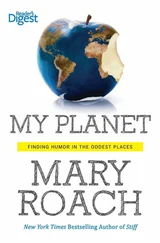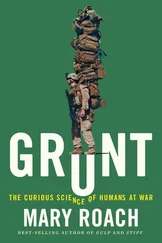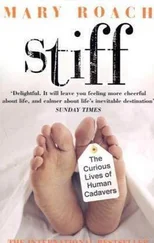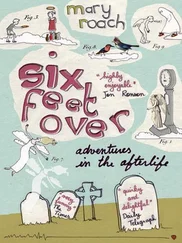Another reason to keep moon dust outside the rover: With so little gravity, inhaled particles may settle more slowly and thus penetrate farther into the lungs, reaching the more vulnerable tissue deeper in. NASA has been funding so much research on dust and dust mitigation that an entire lunar dust simulant industry exists. [57] NASA buys it by the ton, but you can buy it by the kilogram ($28). Go to the eNasco educational products Web site, but not if you’re squeamish. “Save on Lab Time!” says the promo copy for skinned cats. The eNasco dissection specimen section offers ten different skinned cat products, proving that there is, in fact, more than one way.
(Moon rocks and pebbles are classified as “national treasure” and can’t be sold, but no such prohibition applies to moon dust, real or simulated. Which explains why a dust-coated Apollo 15 mission patch sold for $300,000 at a 1999 Christie’s auction.)
Lee considered cutting holes in the back of the Humvee and trying to rig a pair of mimic suit ports for this week’s simulations. Weaver was aghast. “I told him, ‘You are not cuttin’ up the Humvee.’” The HMP mechanic is a high school student from Tennessee, barely shaving but possessed of a scraggy, hard-shelled sang-froid. Lee, who knows Weaver’s mother, saw him rebuilding a dirt bike motor and offered him the greatest summer job in the history of summer jobs.
Lee genuflects on one of the mats while Chase prepares to lower the simulated PLSS (portable life support system—that bulky white astronaut backpack) onto Lee’s torso. His arms are outstretched, as though in supplication, or delivery of a Broadway musical number. Chase’s employer, Hamilton Sundstrand, makes both real and simulated spacesuits, both of which require valets. (One of the less heroic aspects of a spacewalk: Someone will have to help you pull up your pants.) [58] And you will wear a diaper. These days it’s called a maximum absorbent garment. The MAG replaces the DACT (disposable absorbent containment trunk), which had less (not enough) capacity. In the Apollo era, astronauts wore both a pull-up fecal containment device (FCD) and a condom-attached urine containment device. Let’s let astronaut Charlie Duke, providing commentary for NASA’s Apollo 16 Lunar Surface Journal, explain the system: “[The FCD] was like a ladies’ girdle you pulled on and it cut out in the front so that your penis could hang out so you could get on the UCD… I think there was maybe a jockstrap that went on, also, and it had a hole for your penis, and then you rolled on your UCD and then you buttoned that or snapped it to the jockstrap.”
As Chase and Lee grapple with the PLSS simulator, Weaver takes a pack of Camels from a pocket.
EVAs, to him, are more or less cigarette breaks. He’s leaning toward a career in flight, but as a bush pilot, not an astronaut.
Since there’s oxygen in Canada, you may be wondering what’s inside a simulated life support backpack. A fan, mostly, to keep the helmet faceplate from fogging. It doesn’t much matter what’s in it. The idea is to burden the wearers and restrict their movements and field of view in the same manner that an astronaut will be burdened and restricted. Then give them some tools and tasks and see what sorts of problems develop.
As on Apollo, tasks are written on a pad Velcroed to the cuff of the spacesuit. Outer space is list world: cuff checklists, lunar surface checklists, lists of mission rules and “get-ahead tasks.” Morning in orbit begins with a fax or email of the day’s schedule and tasks, updated with last-minute changes. Any deviation must be reported to Mission Control. Outside of the hour or two designated as “pre-sleep,” every waking hour is planned. It’s like a book tour.
Abercromby is flipping through his cuff checklist. He has laminated it, because it rains a lot on Devon Island and because he has a head for planning. I don’t know much about Abercromby, or NASA for that matter, but from what I’ve seen, I could imagine him running the place one day. He is taking these simulations very seriously. His 66-page Field Test Plan includes time lines, objectives, a four-page hazard analysis, an Off-Nominal Situation Resolution Tree and, for each simulated traverse, science priorities, targets of opportunity, get-ahead tasks, and mission rules. The document has been distributed to, but possibly not read by, everyone participating.
Abercromby steps into a set of the white Tyvek coveralls that are standing in for pressure suits. Ping Pong is biting one of Lee’s gloves and dancing around the men’s feet. “Does Ping Pong want to go EVA?” Lee is using his special, high-pitched Ping Pong voice. Abercromby interrupts them. “We should talk about get-ahead tasks and targets of opportunity.”
Weaver watches through smoke. “You look like a crew of painters.”
Once the helmets and life support simulators are on, Chase shoots some video. Abercromby looks mildly uncomfortable. Lee has no problem with the getup. Even a pretend spacesuit, I’m told but have some trouble believing, is a chick magnet. Lee, forty-five, is single and something of a heartthrob in the space community.
Rock hammer in hand, Lee heads up the slope of a hill. Abercromby follows with a sample bag. The teams’ tasks are modeled on Apollo-era EVAs—selecting and bagging rock and soil samples, photographing, and taking gravity meter and radiation readings.
Only one Apollo astronaut, Harrison Schmitt, was a geologist. The rest were pilots who had been given a crash course in lunar geology to help them know what to look for and how to read the land. The training included time in a NASA geology lab with Earth basalts and breccias, painted Styrofoam moon rock mock-ups, and, after Apollo 11, actual lunar samples. Field trips took them out to the Nevada Test Site, 65 miles northwest of Las Vegas, where the Atomic Energy Commission tested nuclear bombs in the fifties, leaving craters up and down the desert floor. Because the rocks were still radioactive, the astronauts couldn’t pick them up and examine them. No one seemed to care, as they were, recalls Jim Irwin in the astronaut commentary of the Apollo 15 Lunar Surface Journal, “anxious to get back into Las Vegas.”
One focus of today’s traverse is timing. How closely are the rovers able to stick to the time line? How often should they check in with ground control, and how do you update the plan on the fly, if one group falls behind? The teams have been asked to keep track of the start and stop times for each phase of the traverse, to see whether things are taking longer than predicted, and if so, what’s slowing them up. At some point, intern Jonathan Nelson will deliver a “productivity metrics” report that will make some NASA manager feel calmer about the $200,000 budget he or she authorized for Arctic analog projects this summer. For now, it means lots of conversations like this one:
NELSON: What do you want, suit time?
LEE: No. Basically, when we started to suit up…
NELSON: So you want suit time.
LEE: That’s what suit time is?
NELSON: There’s a difference between prep and suit.
ABERCROMBY: So what was our boots-on-the-ground time?
Timing is critical to an astronaut wandering around on an extraterrestrial surface. Without knowing how long it takes to walk or drive a given distance on a certain kind of terrain, it’s hard to know how much oxygen or battery life one will need. Apollo astronauts had to conform to “walkback constraints.” These were, and are, first figured out by driving someone out on some lunar analog terrain, say, 3 miles from base, putting a suit simulator on him, marking the start time, and letting him walk back. Apollo astronauts were not allowed to drive farther from the safety of the Lunar Module than the distance they could walk without running out of oxygen, in case the rover broke down. (This is a rationale for having two rovers; if one malfunctions, the other can come pick up the stranded crew.)
Читать дальше












